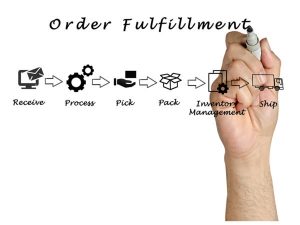A Voice of the Customer (VoC) program is an essential tool to collect valuable customer feedback and take proper action to improve customer experience (CX). A successful program leads to higher return rates, fewer churns, and more loyal customers.
Although many CX professionals understand the importance of VoC and its impact on experience and customer loyalty, many are unable to quantify the business value of their initiatives (75% to be exact, according to CustomerThink research).
This lack of a clear business rationale is a big problem for CX leaders who need to compete with other departments for the budget necessary to launch a successful VoC and CX program.
Today we’re going to share two methods you can use to earn support for your Voice of the Customer program.
Psst! Make sure to check out our free CX guides and exclusive educational video with Forrester waiting for you at the end of the article.
Speak to the unique value of each stakeholder
Before you worry about proving the ROI of a VoC program, focus on building relationships and trust with the key stakeholders in your company.
This means spending time to understand their key pain points and business goals. You should strive to find ways to prove how a CX and VoC program can help them succeed individually.
One effective way to identify the unique opportunities for each stakeholder is by conducting interviews with them. Consider the following examples.
Marketers are usually tasked with brand building, lead generation, and customer communications. B2B marketing expert Chris Ryan of Fusion Marketing Partners advises that, instead of just dealing with problems, CX could help marketing identify highly satisfied customers and “look for chances to make heroes out of your customers.”
Getting advocates to participate in case studies and referral programs would be a big win for marketers, and thus a win for CX leaders, too.
Senior-level marketers are also seeking better customer insight, says VoC marketing expert Ernan Roman of ERDM. You can add value by helping to explain why engagement or purchasing rates are down, as well as what would motivate customers to continue buying, and how to effectively launch new products.
Furthermore, personalization is a long-standing desire with limited success in most companies–another CX opportunity.
In recent years, the job of sales professionals has changed dramatically due to buyer self-education via the internet and social media. This means that the sales reps, when they do engage with buyers, must be better prepared.
For sales teams, CX leaders could bring buyer research to the table to show what types of experiences are more likely to lead to closed deals. For example, AI-powered speech analytics can help analyze sales interactions to highlight improvement opportunities like reps talking too much or discussing pricing too early in the call.
Barry Trailer of Sales Mastery points out that some sales obstacles are outside of the direct control of sales professionals–like Byzantine contracts and overly aggressive lawyers that frustrate buyers and sellers alike. CX leaders could get support by sales leaders by tackling such cross-organization issues that thwart deals.
Similarly, customer service teams can get blamed for product and policy issues. Such as a policy of never giving credit to customers. You could help the VP of customer service put a cost on this policy, making the case to give agents more flexibility.
Last but not least, you can help the product team. In CustomerThink research, the solution (product or service) being purchased and used is worth an average of 40% of the impact on customer loyalty. Don’t make the mistake of many CX professionals and consider process issues as in the scope of customer experience.
For example, software companies must compete based on the features, functionality, and usability of the solutions offered. But customer feedback can lead to a wishlist that’s hard to prioritize.
athenahealth, which provides solutions to the healthcare industry, had thousands of product update possibilities, according to senior VoC manager David Geary. An analysis of feedback from multiple sources found an update to managing outstanding patient balances had high impact with both front line and executive staff at key accounts, thus creating a compelling business case for product managers.
How to win over top management
Numbers still matter, especially to senior executives. According to a Senior VP of Marketing of a large technology firm, “conjecture and anecdotes are not compelling.”
Numbers still matter, especially to senior executives. According to a Senior VP of Marketing of a large technology firm, “conjecture and anecdotes are not compelling.”
When it comes to executives, it’s important to bring hard numbers plus customer quotes to drive action. In one case, the CX team surfaced a communications issue about changes in account ownership. The solution was developed by a cross-functional team, with an estimate of costs and benefits supplemented with an analysis of verbatim comments.
Jack Dean, a former CFO now with sales consultancy FASTpartners, says CX investments generally have a more challenging financial case if the goal is revenue growth. A formal ROI analysis is easier with cost reduction, so he suggests starting there and then following with growth.
For growth-oriented firms, a CX case that builds on increasing average order size or revenue per customer would be compelling to executives. Whereas an established, slower-growing market leader may be more interested in customer retention.
Either way, executives aren’t looking for precision. They want to understand the assumptions and analysis in order to make a good decision.
Business & Finance Articles on Business 2 Community
(21)
Report Post




